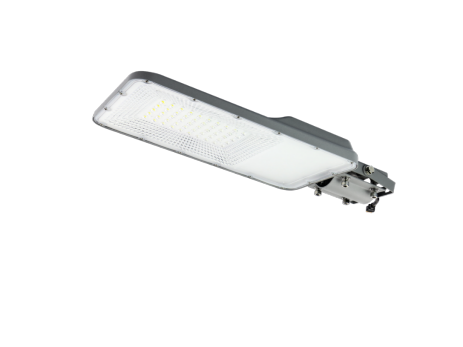LiFePO4 battery – The main stream battery for Solar Lighting
LiFePO4 battery – The main stream battery for Solar Lighting

With more and more major economies in the world striding ambitiously towards the global carbon neutrality goals around the middle of the century, we are seeing upward trends in the demands of solar street and flood lights as an affordable solution to light up private properties, streets and public spaces with efficient LED lights.
Rechargeable batteries are one of the most important components for the reliability of the solar lighting. We all know that the positioning of the solar panel to get full exposure to the sun is important for the efficiency of the solar system. This is important, but its efficiency is also depending on the quality of the batteries in the solar system. The type and condition of the batteries determine how long the solar panels of the same size need sun exposure. Some batteries might only need four hours of sun and it will offer to light the entire night. Others may need a complete day of sunlight.
In this article we are going to look at the rechargeable battery types for solar lighting. What are they, and the pros and cons of these batteries to help you understand the advantage and disadvantage of these batteries.
Ni-Cd, Ni-MH, and Lithium-ion are the three major types of rechargeable batteries used currently.
Ni-Cd, nickel-cadmium. It consists of nickel and cadmium, separator and alkaline. This was the most popular rechargeable batteries for portable devices back in 1990’s, but it is being phased out because it contains heavy metal cadmium that causes damage to the environment. We are not going to elaborate it on this article.
Ni-MH battery is very similar to Nickel cadmium battery but it consists of Nickel hydroxide as positive electrodes, Hydrogen absorbing alloys (links) as negative electrodes and Potassium hydroxide alkaline electrolyte. Cell voltage of Ni-MH battery is 1.2V and charging voltage is about 1.6V per cell. With this low voltage per cell, manufacturers have to combine multiple cells to build battery packs to increase their voltage making not compact enough in size and not cost effective. The disadvantage of Ni-MH battery is its high self-discharging rate. If you leave a fully charged Ni-MH battery for a few months it will lose most of its charge. A typical Ni-MH battery can lose from 4-20% of its charge on just the first day and afterwards self-discharge rate drops to about 1% per day depending on the ambient temperature.


Lithium Battery for Solar street lights are becoming more and more main stream solution. We all know that lithium batteries are still very expensive considering other types, but it is fair to say that they became much more affordable for solar street light integration. In last 6 years the cost of lithium battery dropped by almost 80%. There are different types of lithium batteries that can be used for Solar Street Light systems. Our experience showed that definitely the best solution for solar lighting is the LiFePO4 battery.
Lithium-ion (li-ion) currently is the most common rechargeable battery type for many portable and solar-based products. The old style of lithium batteries used lithium metal, but because of the instability and safety issues, nowadays lithium ions were used instead. Lithium-ion batteries have greater advantages of high energy density and low maintenance by comparing with Ni-Cd and Ni-MH that makes them the best solution for solar lighting products and other electronic devices or vehicles.
The most common types of Lithium-ion batteries are Li-cobalt, Li-manganese, Li-phosphate and NMC (lithium nickel manganese cobalt oxide). Each of these Lithium-ion batteries uses different cathode materials, so each of them has different pros and cons. Li-cobalt batteries are popularly used in consumer electronics, while li-phosphate batteries are used in electric vehicles, portable lighting and solar lighting.

Li-ion battery structure. Source – http://electronicdesign.com
Lithium Iron Phosphate batteries
Lithium Iron Phosphate batteries are safer than Li-cobalt and Li-manganese batteries, and they have longer life span and can drive higher currents. However, LiFePO4 batteries’ disadvantage is having one of the lowest capacities of all lithium-ion battery types. Although it is lower by comparing with other types of lithium-ion batteries, it is a great fit for solar street lights or flood lights that don’t require huge amount of electricity to power the system.
Lithium-ion Battery Advantages
Lithium-ion batteries have high energy density, higher than Ni-MH, twice as high as Ni-Cd and more than three times higher than lead acid batteries.
Li-ion batteries have low self-discharge rate
Li-ion batteries do not develop a memory effect;
Li-ion batteries are practically maintenance free, which is especially useful for solar lighting;
Li-ion batteries are safe for environment without containing any toxic substances;
Because of high energy density, li-ion batteries have light weight and small size.
Li-ion batteries allow fast charging to full capacity;
Safety – li-phosphate batteries have very good thermal and chemical stability.
Lithium-ion Battery Disadvantages
Li-ion batteries have high manufacturing costs resulting in high sale prices.
Li-ion batteries require protection circuits to limit voltage and currents and ensure better safety;
Some Li-ion batteries like li-phosphate provide low discharge rates;
Rechargeable battery specific energy comparison chart

Rechargeable battery nominal voltage chart

Rechargeable battery average capacities for solar lights chart

Rechargeable battery average self-discharge rate per month comparison chart

Rechargeable battery approximate cycle life comparison chart

Rechargeable battery theoretical lifetime expectancy in solar lighting chart

Rechargeable battery temperature range comparison chart

Average price for solar lights using certain battery type


 EN
EN  ES
ES PT
PT JA
JA RU
RU DE
DE FR
FR